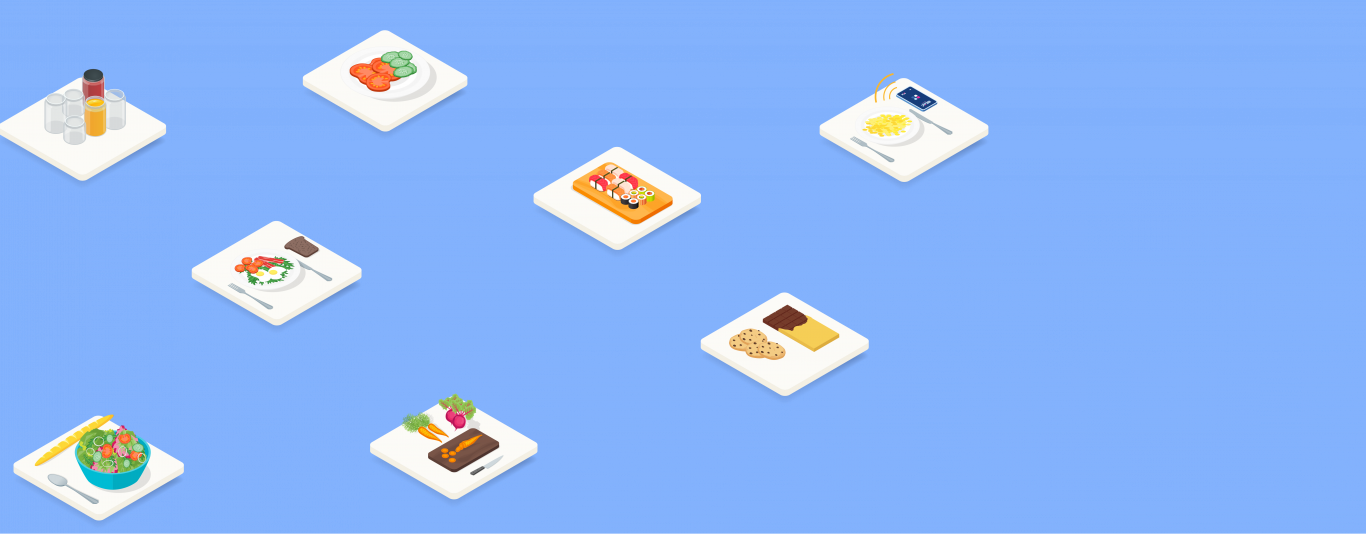News
Consumer expectations are changing. What are the trends in food consumption today?

Les attentes des consommateurs évoluent. Aujourd’hui, quelles sont les tendances de consommation alimentaire ?
1/ Organic food is really taking off
The global market for organic food is growing rapidly. In 2017, the International Federation of Organic Agriculture Movements (IFOAM) estimated the market was worth €90 billion, compared with some €11 billion in 1999 (9x increase). The market could be worth $320 billion by 2025*.
*SIAL Press Kit 2018
2/ The trend towards “free from” or “reduced content” products
Consumers are moving towards products with a lower sugar content and away from so-called “processed” products, such as juice from concentrate. They are also visiting fewer fast food restaurants.
3/ Health and fiber
Consumers are increasingly attentive to what they consume for health reasons. To maintain healthy levels of intestinal flora (microbiota), products based on probiotics – food supplements that promote intestinal balance – and prebiotic fibers are becoming more popular.
4/ A diet that is more local and regional
Consumer demand for local products is on the up! So-called “locavores” try to only consume products sourced within a radius of around 150 km from their home. This practice makes it possible to consume seasonal products, to support the work of local producers, and to commit to the environment by reducing transportation.
5/ Culinary discovery: consumers have a taste for adventure
Consumers want to try new sensory experiences, and leave their comfort zone in order to taste new flavors. 62% of consumers like discovering new products**.
**Source: Grand View Research
6/ Snacking
Food categories are becoming more snack-focused, and the agri-food sector is developing solutions in practical takeaway formats. Millennials (the generation born between 1980 and 2000) are those most interested in snacking: 63% of them snack to skip a meal owing to a lack of time***.
***Research: Innova Market Insights.
7/ Smart plates
These devices allow consumers to monitor their consumption, both in terms of ingredient quality and quantity. Artificial intelligence is now able to decipher what a plate contains. Apps have been developed to give consumers advice and support with regards to their daily diets.
There are many apps including Yuka, Smartplate, or Foodvisor, for instance, that can analyze a meal from a single photo. Thanks to deep learning (a branch of artificial intelligence), these apps recognize the foods on a plate, estimate their quantity, and tell us their nutritional values.
8/ Towards no more plastic or packaging
Consumers are now adopting an ecological approach. As well as wishing to reduce the use of plastic, they want to reduce their waste, increase biowaste, and are increasingly turning to new technologies for recycling, biodegradability, and composting.
| Tereos is taking action in response to these consumer trends. The Group is constantly working on new solutions to meet consumer expectations. Here are some examples:
Organic food Tereos has been marketing organic sugar for 15 years through its distribution subsidiary Loiret & Haentjens. In 2019, the Group launched its own organic sugar production in France, Mozambique, and Brazil. “Free from” or “reduced content” In Brazil, Tereos published a manifesto, rolled out during an advertising campaign via its B2C brand Açúcar Guarani. It encourages consumers to eat in a more balanced way, while enjoying what they eat. Local food The Group supplies sugar to Coca-Cola: it is only 34 km from the sugar beet fields to the Tereos sugar factory in Lillers. The sugar produced is then transported to the Coca-Cola plant in Dunkirk, less than an hour’s drive away, for local bottling. |
